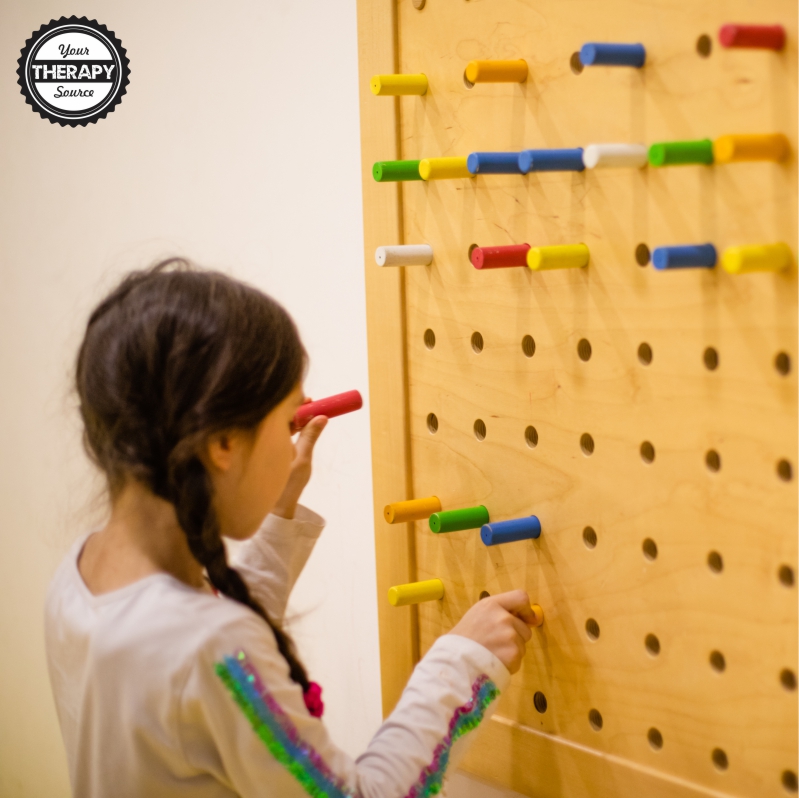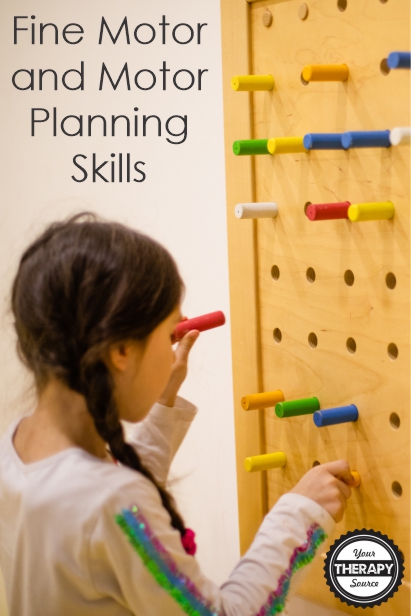Fine Motor and Motor Planning Skills
Are you aware of the relationship between the development of fine motor skills and motor planning skills? Researchers took a closer look at the motor planning in 6- to 11-year-old children.
Motor planning is the ability to create an idea, plan an action and execute that action. It is a complex process that requires cognitive thought, sensory input and a motor action.

What Did the Research Say About Fine Motor Skills and Motor Planning Skills?
The researchers used a pegboard and midline crossing task to determine motor planning abilities.
Following data analysis, the results indicated that:
- children modified their strategies of hand use and space use as a function of age, with a transition in the 8- to 9-year-old children.
- the crossing midline tasks results were similar and showed that children in the 8-9 year old range changed their hand use in contralateral space.
The researchers concluded that for motor planning skills there may be a developmental synchrony between crossing the midline and bimanual coordination, and suggest the establishment of the left hemisphere’s dominance for visual-manual tasks.
Crossing midline is the ability to cross over an imaginary line down the center of your body from head to toes, separating the body into a left and right side. This skill requires that the right and left sides of the brain work together to create a motor action.
In addition, the strategies used for performing manual skills develop gradually towards mature behavior, with an important developmental phase at around the age of 8–9 years which influences the children’s motor abilities.
There are many ways to help children develop motor planning. The most important way is to PRACTICE, PRACTICE, PRACTICE. Children need repetition to learn and execute motor actions.
Activity Ideas to Practice Motor Planning Skills
10 Games to Practice Crossing Midline
5 Activities to Practice Motor Planning
Motor Planning with Pool Noodles
The Move Like Me download includes action poses for children to practice motor planning, crossing midline, body awareness, timing, rhythm, coordination and physical activity. This is a NO PREP activity. Simply print and play or project onto the whiteboard or tablet.
Which Way? includes 16 directional arrow pages (large and small size) plus 6 boards to follow. The activities are available in varying degrees of difficulty. Children will practice moving right, left, diagonally, forwards, backwards, clockwise, down and up. Practice motor planning skills, visually scanning from right to left, understanding prepositional phrases and spatial awareness with this movement activity.
Reference
Serrien, D. J., & O’Regan, L. (2021). The development of motor planning strategies in children. European Journal of Developmental Psychology, 18(1), 1-17.



